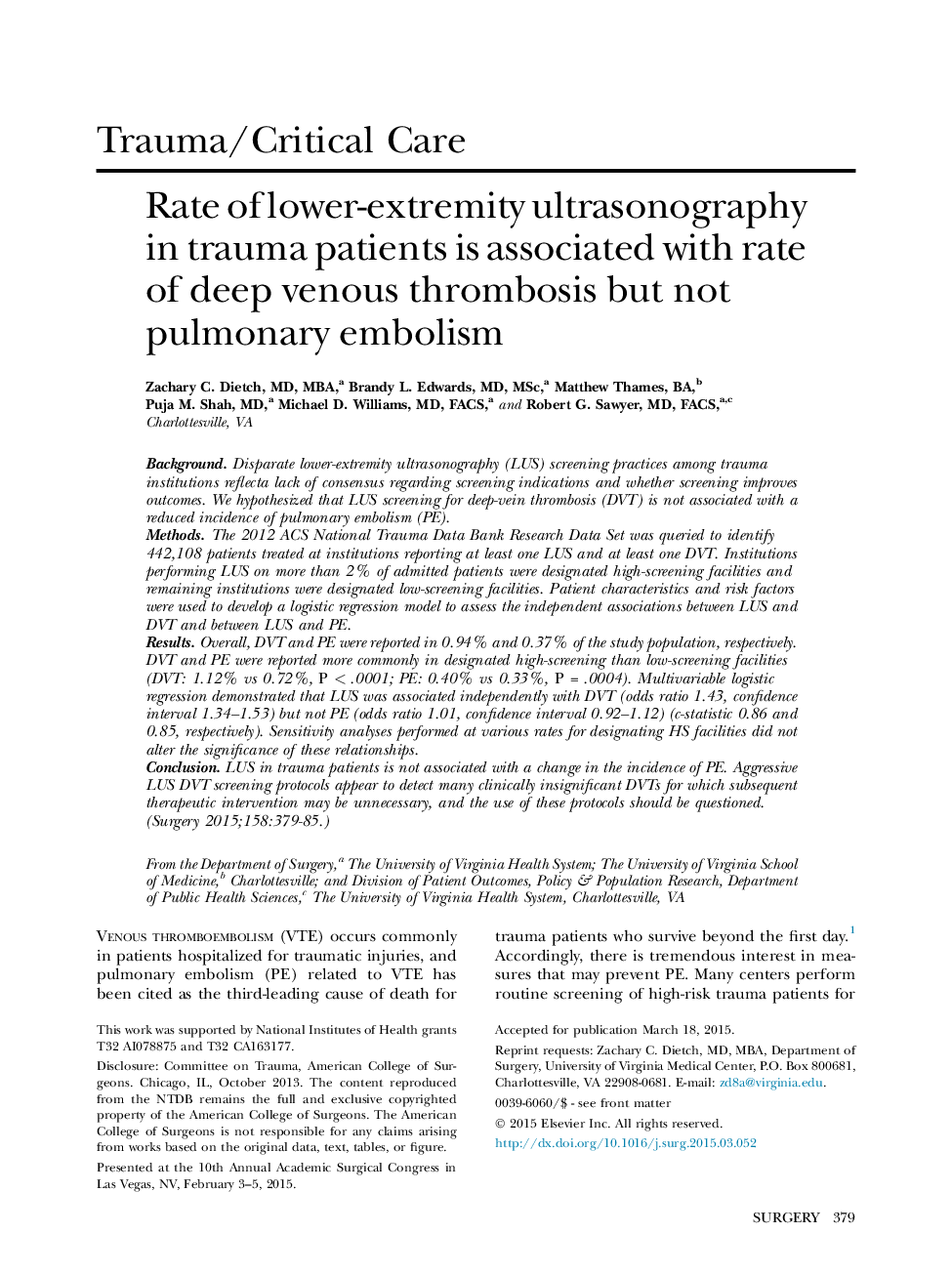| Article ID | Journal | Published Year | Pages | File Type |
|---|---|---|---|---|
| 4307005 | Surgery | 2015 | 7 Pages |
BackgroundDisparate lower-extremity ultrasonography (LUS) screening practices among trauma institutions reflecta lack of consensus regarding screening indications and whether screening improves outcomes. We hypothesized that LUS screening for deep-vein thrombosis (DVT) is not associated with a reduced incidence of pulmonary embolism (PE).MethodsThe 2012 ACS National Trauma Data Bank Research Data Set was queried to identify 442,108 patients treated at institutions reporting at least one LUS and at least one DVT. Institutions performing LUS on more than 2% of admitted patients were designated high-screening facilities and remaining institutions were designated low-screening facilities. Patient characteristics and risk factors were used to develop a logistic regression model to assess the independent associations between LUS and DVT and between LUS and PE.ResultsOverall, DVT and PE were reported in 0.94% and 0.37% of the study population, respectively. DVT and PE were reported more commonly in designated high-screening than low-screening facilities (DVT: 1.12% vs 0.72%, P < .0001; PE: 0.40% vs 0.33%, P = .0004). Multivariable logistic regression demonstrated that LUS was associated independently with DVT (odds ratio 1.43, confidence interval 1.34–1.53) but not PE (odds ratio 1.01, confidence interval 0.92–1.12) (c-statistic 0.86 and 0.85, respectively). Sensitivity analyses performed at various rates for designating HS facilities did not alter the significance of these relationships.ConclusionLUS in trauma patients is not associated with a change in the incidence of PE. Aggressive LUS DVT screening protocols appear to detect many clinically insignificant DVTs for which subsequent therapeutic intervention may be unnecessary, and the use of these protocols should be questioned.
